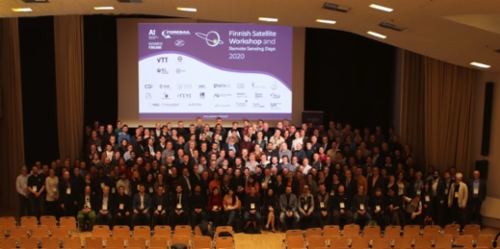Finnish Satellite Workshop 2020, Espoo, Finland 20-22 January 2020Tuesday 1/28/20, time 11:50 AM Finnish Satellite Workshop with Finnish remote sensing days I participated in the Finnish Satellite Workshop, a Finnish satellite seminar held on 20-22 January 2020 at Aalto University in Espoo. The seminar has grown since last year and the number of registered participant was now 558. There were total 87 presentations in two halls this year. Each presentation was 20 minutes long. Unfortunately, it was not possible to attend all sessions. Among others, about 30 satellite projects were introduced at the seminar. Below you will find some notes of the presentations that for me were most interesting. Small satellites The smallest satellites are 10 cm x 10 cm x 10 cm and weigh approximately 1.5 kg. The size of a satellite of this size is defined as 1 unit (1 U). The satellite needs both a power supply and a communication system in order to function. In addition, its cargo may be, for example, a camera and a measuring device. There are several types of measuring instruments. Building a small satellite (1 U) costs about EUR 50,000 - 200,000 and sending it to an altitude of 400 - 700 km costs about EUR 50,000 - 100,000. The Suomi100 satellite is a small satellite (1 U). It was launched into space on 3 December 2018 on Falcon 9 rocket, and there is a camera and a measuring device aboard. The Suomi100 satellite has taken several pictures which are available online. Further information: finland100satelliitti.fi
Slightly larger satellites The satellite can also be for example 3 units (3 U) in size, measuring 10 cm x 10 cm by 30 cm. The modular structure makes it possible to construct and transmit satellites in a reasonable manner. The largest satellites presented at the seminar were 16 U in size, enabling them to carry powerful cameras and measuring instruments to study the mineral shadow of asteroids, for example.
Measuring environmental changes One field to make use of small satellites relates to various environmental issues. This year, several projects to measure climate change were introduced. Satellites are able to measure CO2 concentrations, ice levels, desertification, predict hurricanes or any other changes in the nature in a very short time. The new satellites have smaller and more accurate cameras than the old ones, the quality of images is thus constantly improving. In some cases, the data collected by the satellites may be available to you in a refined form via some phone applications in real time.
KitSat, Finnish satellite for training purposes At the previous seminar in January 2019, Jari Mäkinen introduced the KitSat project. Now the project has been launched. In 2019 , 50 satellites were sold and this year's forecast is to sell 400 satellites. KitSat is a small satellite (10 cm x 10 cm x 10 cm) that can be used for training and teaching purposes. It is demountable and has the elements of a real satellite. You can fly it, shoot pictures, and communicate with it just like with a real satellite. KitSat is a Finnish start-up that has literally taken off. Many of us do not know how satellites work and what they look like - KitSat meets this need. Further information: KitSat
The third satellite seminar I attended the seminar for the third time. The content and organization of the seminar worked well. Jaan Praks and his team certainly know how organize a seminar. I will definitely participate again next year! Further information: Finnish Satellite Workshop 2020   |



